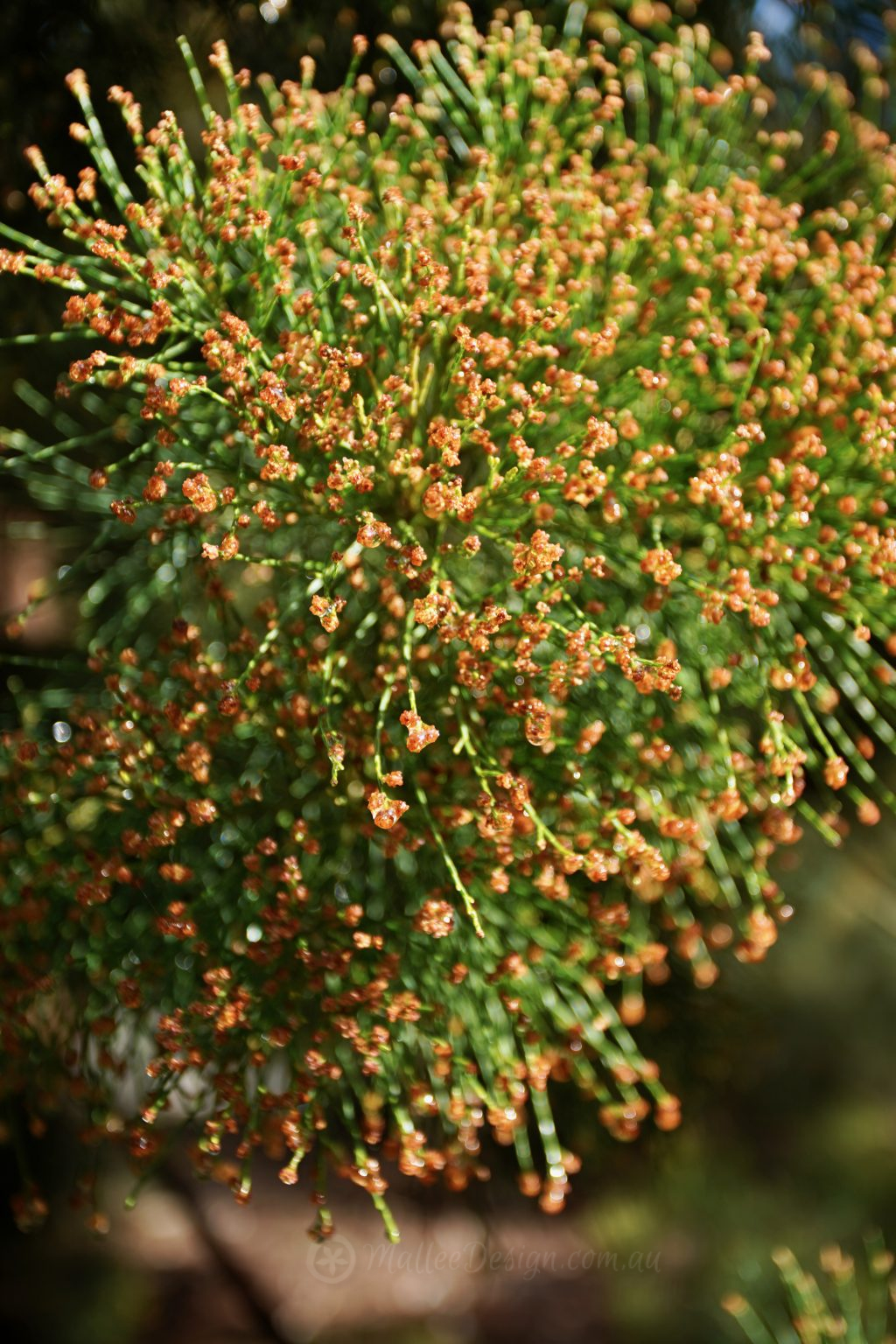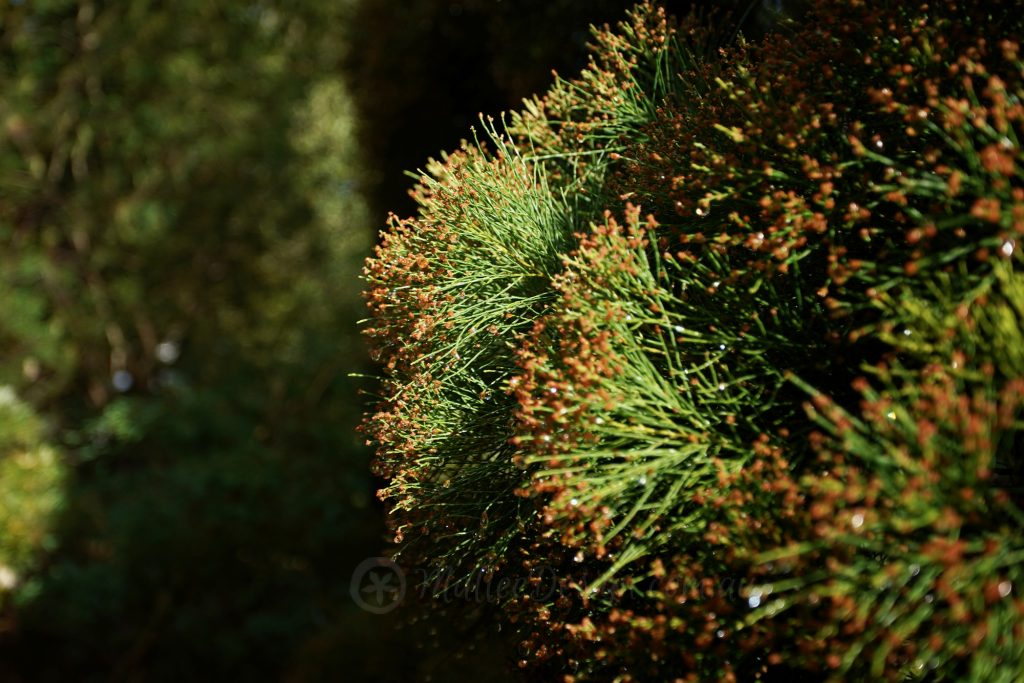This almost Christmas like tree is part of the Casuarina family, at first glance can look like a conifer or pine tree, but fuller in habit. Its overall texture and colour is very similar to She Oaks when they are flowering, which is probably why this specimen caught me eye.
The male and female flowers are both present on the same tree. The male flowers being slightly rusty colour giving the whole tree a bronze haze in flower. Flowering in the Illawarra area in Autumn, it compliments any of thee rusty coloured banksias also flowering at this time and would make an excellent dense screen amongst other native hedging plants.

Commonly known as Daintree pine or Daintree oak, it is a slow growing small tree to approximately 6mts tall. It is endemic to the Daintree tropical rainforests of north-east Queensland, but has been grown as far south as Wollongong, and there seems to be some nurseries growing in it Melbourne. Gymnostoma australianum enjoys a moist free draining sandy soil, in full to part sun.

In the image above you can see Gymnostoma australianum growing alongside Banksia and various Grevillea species in the Illawarra Grevillea Park.
What looks like leaves on this evergreen tree are actually the stems, similar to Casuarinas, and the true leaves are only visible when these twigs or needles are broken at the joint.

After flowering the female flowers become rounded spiked cones appearing about 7-10mm long, the spikes open up to look like bird mouths creating a beautiful decorative seed pod.

Being from north east Queensland this tree is happiest in a tropical climate and can also be found growing along water ways and on the edge of creeks. With rainforest conditions little maintenance is required, some growers are suggesting it can be grown in coastal conditions, including salt winds and once established will also tolerate mild frosts. If anyone has some experience growing this species in a exposed coastal site I would love to hear from you.

Great for screening and reasonably wind tolerant it can also be hedged or shaped into a living Christmas tree. It would also work in a pot in a similar way to Adenanthos sericeus and brought inside once a year to be decorated.

I am keen to try this species as a replacement to Callitris, it has a softer more weeping appearance from a distance and looks a little less Conifer like. I think it would attract the Black Cockatoos too 😉









Leave a Reply